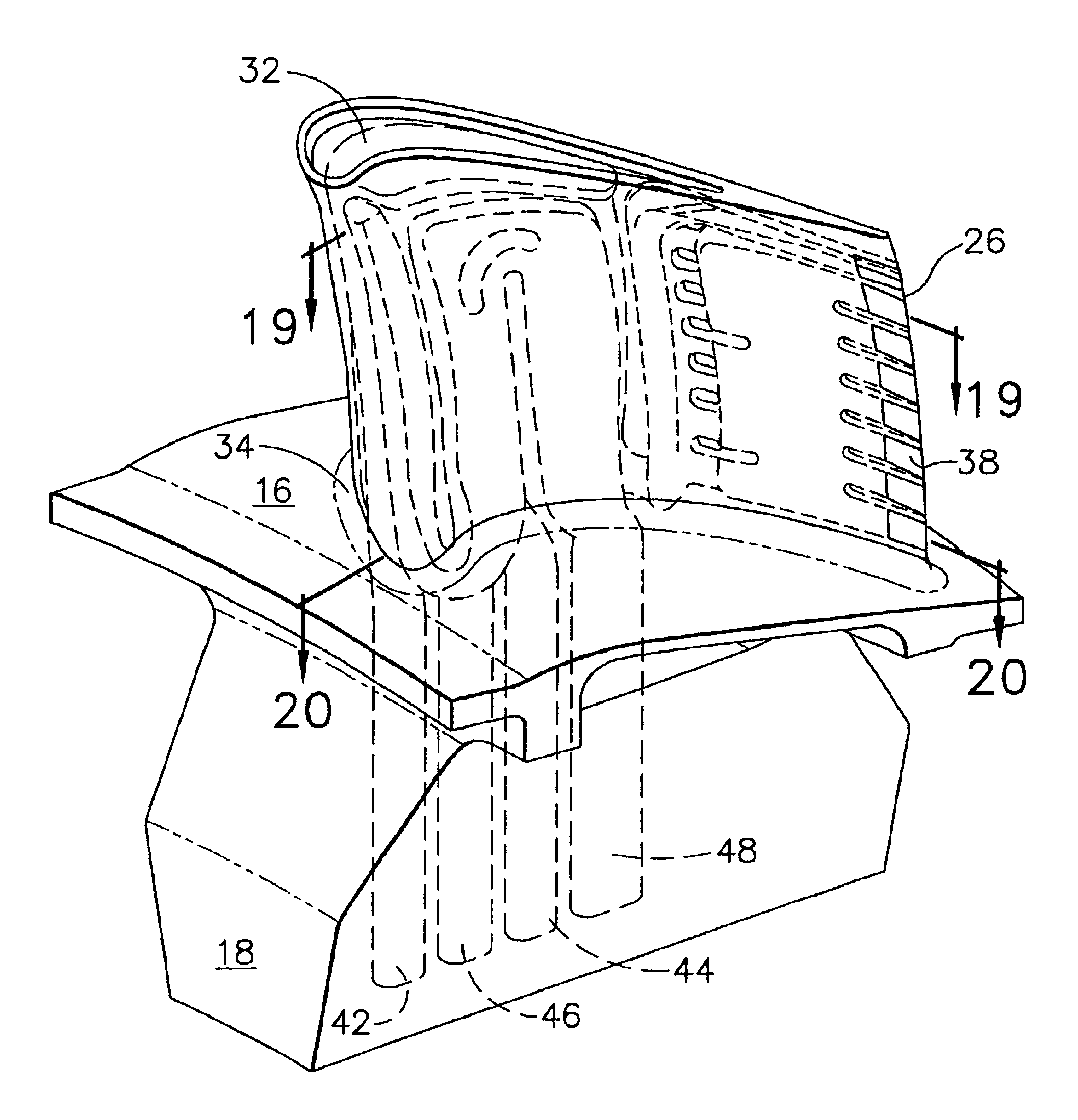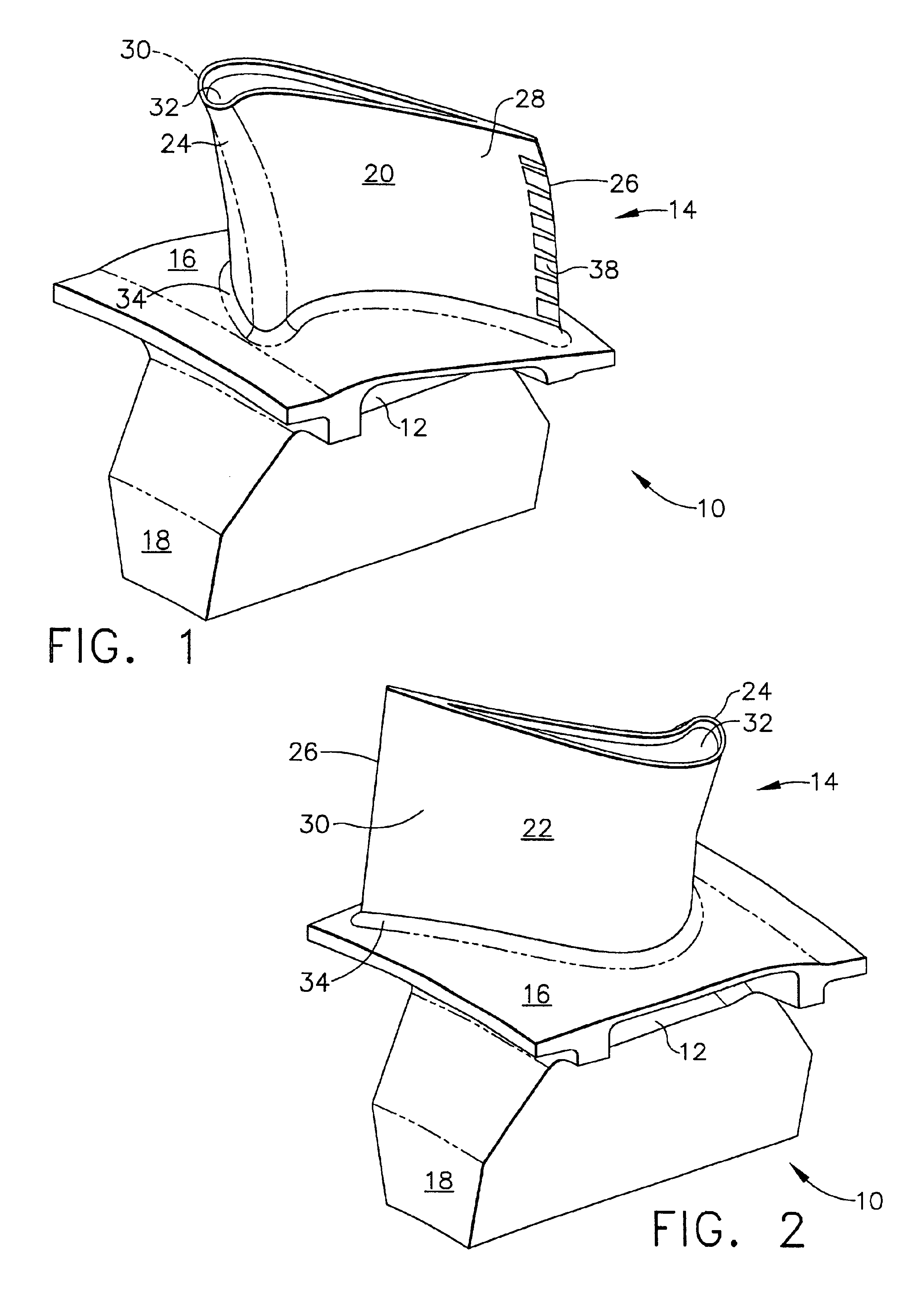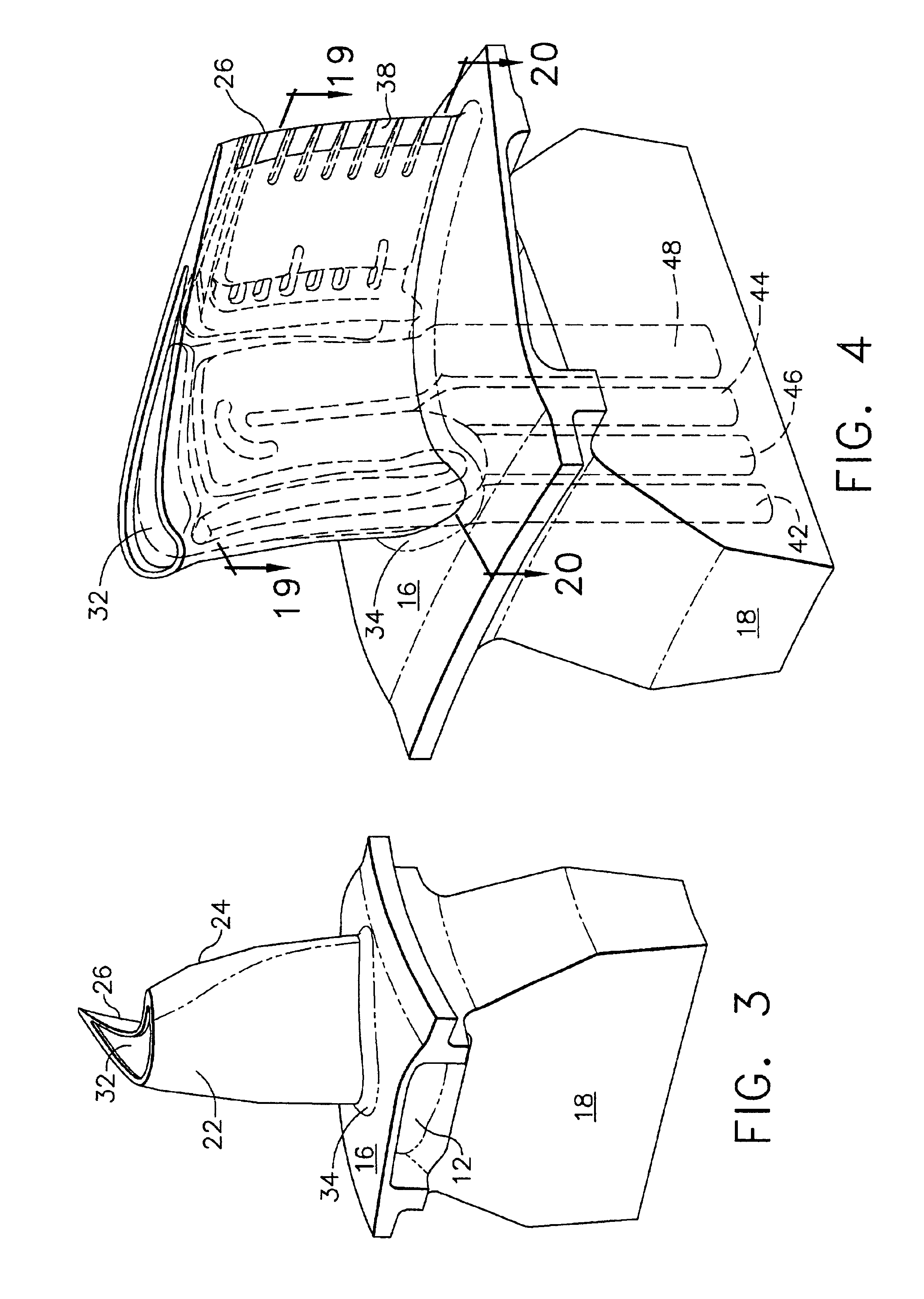High effectiveness cooled turbine vane or blade
a turbine blade and high-efficiency technology, applied in the field of turbine blades, can solve the problems of limiting factors in achieving improved power plant efficiency, unable to meet the requirements of high-efficiency turbine blades, and difficult to manufacture, etc., to achieve the effect of reducing cooling flow, facilitating manufacturing, and high cooling efficiency
- Summary
- Abstract
- Description
- Claims
- Application Information
AI Technical Summary
Benefits of technology
Problems solved by technology
Method used
Image
Examples
Embodiment Construction
[0036]The following detailed description is of the best currently contemplated modes of carrying out the invention. The description is not to be taken in a limiting sense, but is made merely for the purpose of illustrating the general principles of the invention, since the scope of the invention is best defined by the appended claims.
[0037]FIGS. 1, 2 and 3 disclose an aircraft jet engine turbine rotor blade 10 that includes a shank 12 and the airfoil 14 of the invention. The shank 12 includes a platform 16, which helps to radially contain the turbine airflow, and a blade root area 18 where the dovetail (not shown) would be machined, which in the case of the blade attaches it to a turbine rotor disc (not shown). The airfoil blade 14 has a first outer wall 20 a second outer wall 22 together defining an airfoil shape including a leading edge 24, a trailing edge 26, a pressure side 28 along the first outer wall 20, a suction side 30 along the second outer wall 22, a blade tip 32, a pres...
PUM
 Login to View More
Login to View More Abstract
Description
Claims
Application Information
 Login to View More
Login to View More - R&D
- Intellectual Property
- Life Sciences
- Materials
- Tech Scout
- Unparalleled Data Quality
- Higher Quality Content
- 60% Fewer Hallucinations
Browse by: Latest US Patents, China's latest patents, Technical Efficacy Thesaurus, Application Domain, Technology Topic, Popular Technical Reports.
© 2025 PatSnap. All rights reserved.Legal|Privacy policy|Modern Slavery Act Transparency Statement|Sitemap|About US| Contact US: help@patsnap.com



